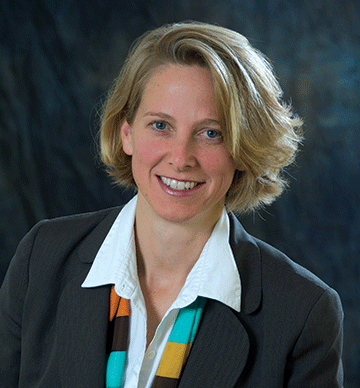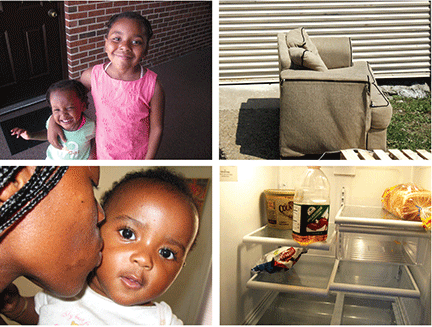 Class of ’00 | “Most people don’t believe that hunger exists in America,” Mariana Chilton G’96 Gr’00 was saying. “There’s food everywhere and there’s obesity, so how could there be food insecurity?”
Class of ’00 | “Most people don’t believe that hunger exists in America,” Mariana Chilton G’96 Gr’00 was saying. “There’s food everywhere and there’s obesity, so how could there be food insecurity?”
Chilton, associate professor of public health at Drexel University and founding director of the Center for Hunger-Free Communities, is a leading expert on hunger. Appointed to the National Commission on Hunger in February, she testifies often before Congress and makes frequent media appearances, recounting her research findings and clinical experiences to policymakers and the public.
“I get taken seriously on the Hill because I can crunch the numbers,” she says. “I can say things like, ‘Food stamps prevent hospitalization of children and promote child development,’ because I’ve got the numbers to back it up.”
The numbers, generated by the center’s surveys and structured interviews, tell what Chilton calls the “official story” of the growing hunger in America and the role of public assistance in blunting its edge. Forty-five million Americans—17 million of them children—are affected by “food insecurity,” defined by the USDA as a “household-level economic and social condition of limited or uncertain access to adequate food.” Last fall, two weeks after the Department of Agriculture announced that 17.6 million households did not have enough to eat in 2012 (up from 13 million in 2008) and just two days after the Census Bureau reported that 46.5 million Americans are officially “poor,” Congress cut their food-stamp allotment.
The Center for Hunger-Free Communities is a research enterprise and an aspiration. Chilton wants to understand food insecurity from an epidemiological point of view as well as from the everyday experiences of women—and their children.
“I’ve always been moved by people who are suffering,” she says. “It’s random and unfair that I was born into wealth and others into poverty.”
In 2008, she started a project at the center called Witnesses to Hunger. After distributing digital cameras to 42 low-income moms in Philadelphia, Chilton invited them to take pictures that might help policymakers and the public understand the reality behind words like hunger and poverty. They came back with images of empty refrigerators, bloodstained sidewalks, broken-down houses, a pile of pocket change that had to carry the family through the end of the month. But they also brought the faces of children—happy, bright, and full of promise. Now the data came with a name, an address, and a personal story.
“I had no idea how bad it could be until I started Witnesses to Hunger and gave cameras to the women,” says Chilton. “They trained me up on what hunger really means.”

The photos shine a light on some of the hidden, personal aspects of poverty and allow the Witnesses themselves to frame the issue of hunger, amplifying their voices—backed by the authority of lived experience—in the national dialogue. “They’re the expert witnesses, not me,” Chilton maintains. “When I testify with the science, I can see legislators’ eyes glazing over. So let’s get the unofficial story—the reality—out there. When the Witnesses speak, people recognize their brilliance, their grit, and their heroism, and also the magnitude of the deprivation, which I could never get across with the numbers.”
Today, there are Witnesses to Hunger in Philadelphia, Boston, Baltimore, Providence, Camden, and Sacramento. They have testified before the Senate, told their stories to state legislators and policymakers, and appeared at an exhibition of their photography in the Capitol Rotunda. Chilton and Witness Barbie Izquierdo were invited to the White House to discuss A Place at the Table, a 2013 documentary about food insecurity in America in which they were featured.
Being listened to and having people view their photographs is empowering for the Witnesses, Chilton explains, a way of overcoming their sense of having been excluded and forgotten. “The very act of telling their story is a form of belonging and an acknowledgement that they matter.”
Given that 75 percent of families on food stamps have at least one household member working full-time, the Center for Hunger-Free Communities has launched a microfinance project to help low-income women build wealth through financial-literacy training, access to banking services, and small-business loans.
“You can get a Witness in front of Congress, but when she comes home she still needs money,” Chilton points out. “When they come together in groups, they help each other, and with small loans for businesses like braiding hair, doing nails, cleaning houses, and providing daycare, they can thrive as entrepreneurs.”
As a Harvard undergrad, Chilton stretched a semester abroad in Chile into a year and a half, studying that nation’s poetry, history, and politics while translating for a human-rights group that was helping women search the Atacama Desert for the mass graves of loved ones who had been “disappeared” by the regime of Augusto Pinochet. A good friend eventually told her, “Mariana, this is not your place. Why don’t you go home and do something about human-rights abuses in your own country?”
Chilton took the advice and ended up with the Cheyenne and Lakota in New Mexico, where she learned the ways of the sweat lodge and other rituals and beliefs of Native American spirituality, experiences that led her into Penn’s PhD program in folklore and folklife. Following two years of course work, she returned to Indian Country to do field research for her dissertation. Her investigations of the Sun Dance ceremony put her in touch with Cheyenne priests and tribal health leaders in Oklahoma who were working with the Indian Health Service, a federal agency that she says was trying to justify closing a reservation hospital by undercounting the population.
After getting her doctorate in folklore at Penn, Chilton went on to the University of Oklahoma for a master’s degree in public health and epidemiology, focusing on cross-cultural rifts between the Indian Health Service and the people it served. Ironically, once she started looking for an academic position, she found that American Indian candidates were selected over her.
“That was as it should be,” she says. “I was a white Yankee girl from Massachusetts. These are not my issues because I’m not Indian.”
And so she headed back East, landing a job in Drexel’s School of Public Health, whose faculty was enthusiastic about her interest in blending public-health research with advocacy and social justice.
“I combine research, advocacy, friendship, and love,” says Chilton. “It sometimes makes my colleagues uncomfortable, but the women I work with teach me so much—and they’re teaching the world so much. And while what they show us is brutal and their suffering immense, I get a lot of joy out of knowing them and being with them.”
—Peter Nichols CGS’93

